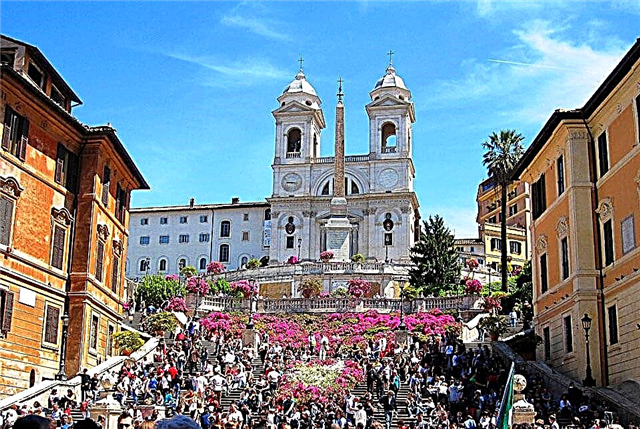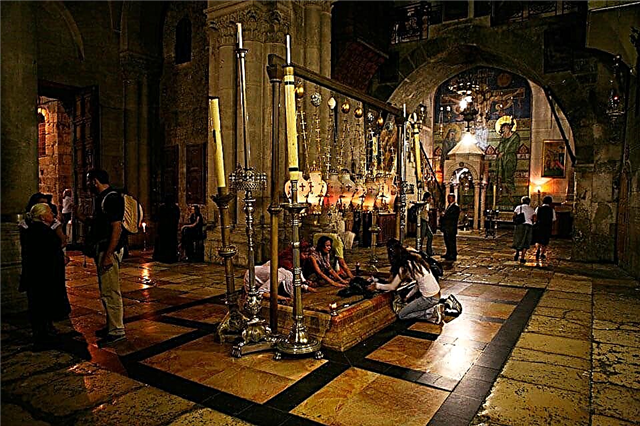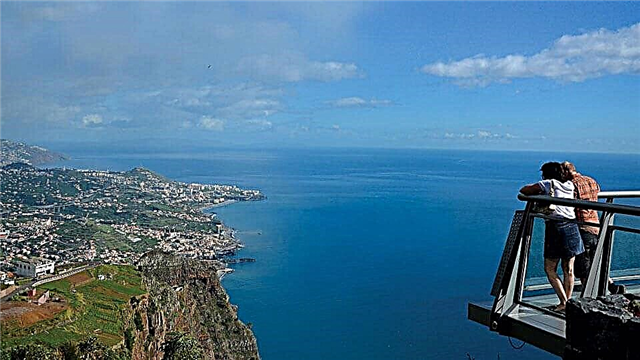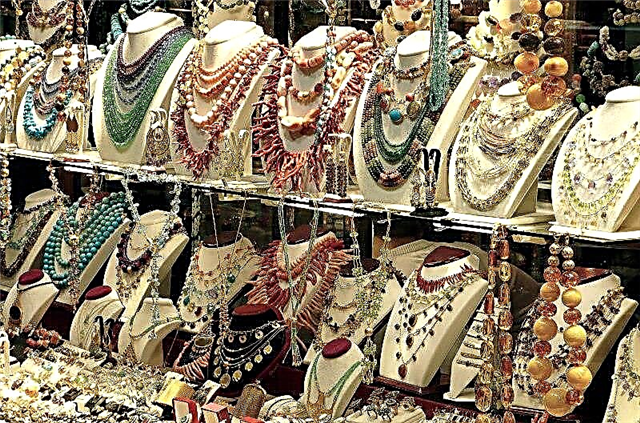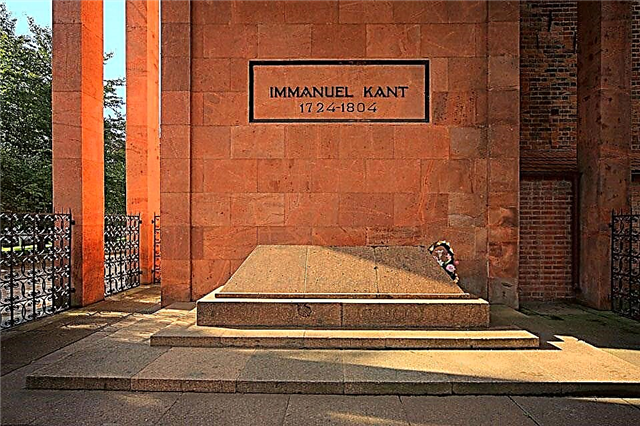The westernmost city of Russia, Kaliningrad, attracts travelers with its special atmosphere. The former Königsberg was the capital of East Prussia until 1945. As a result of the selfless labor of Soviet citizens, the city literally rose from the ashes. Despite the numerous destruction after the Second World War, a considerable number of architectural monuments have been preserved here. Tourists will always be interested in deciding what to see in Kaliningrad in 1 day. Noteworthy are the unique cathedrals, fortifications, museum complexes with unique expositions, spacious green parks. Various sights symbolize the richness of the cultural heritage of this historical and geographical area.
Brandenburg Gate

The Brandenburg Gate is one of the many architectural monuments that testify to the German-Prussian past. They acquired their present appearance in the middle of the 19th century. King of Prussia Frederick II ordered to build a new brick gate instead of a dilapidated wooden structure, which would serve as a reliable defense of the city from the south. The grandiose structure attracts tourists with its Gothic architecture. The gate consists of two leaves, the width of which allows passage for only one car. Traffic on Bagration Street passes through them.
The building is decorated with two crenellated pediments, decorative turrets, coats of arms, medallions, bas-reliefs and ornaments made of light sandstone in the form of stone flowers. The massive brick walls feature arched windows and oak doors. Inside the gate is an unusual marzipan museum. In the hall, there are exhibits made from sugar dainties.
Church of the Sagrada Familia

The Sagrada Familia Church is a masterpiece of Kaliningrad's Gothic architecture. This is a former Catholic church located in the middle of a residential area built during the Soviet period. At present, a concert hall of the regional philharmonic society is equipped there. The majestic building was built of red brick at the beginning of the 20th century.
The building is famous for its tower, directed upwards for several tens of meters. The facade of the historic building, crowned with a pitched roof, is decorated with decorative details interspersed with bright white elements, tall lancet windows and vertical bars. Numerous stepped pediments give the severity of cubic forms.
The interior decoration of the church is dominated by octagonal columns. The organ stands amid an exquisite arcade under the vaulted ceiling. Lighting devices and plasma screens are installed along the perimeter of the room. Organ concerts, jazz festivals, chamber concerts and romance evenings are regularly held here.
Friedland gate

Tourists should pay attention to the Friedland Gate, which served as part of the city's defense system in the middle of the 19th century. The facade of the neo-Gothic building, divided by five buttresses, is decorated with sculptures, towers, carved patterns and rhombic ornaments. Massive brick walls culminate in rows of teeth. Through holes of the gate are made in the form of pointed arches.
For lovers of historical artifacts, a museum has been organized in the fortification. In the premises, you can see various household items and everyday life of the townspeople: dishes, clothes, toys, books, coins, stamps, pharmaceutical containers and many other valuable exhibits. Of interest is the hall dedicated to the Medieval period. It displays armor, weapons, flags and coats of arms of knightly orders. Visitors are offered the opportunity to take a virtual walk through the old quarters of pre-war Konigsberg.
Fishing village

Along the picturesque embankment of the Pregolya River, there is a small trading, ethnographic and handicraft quarter - Rybnaya Derevnya. The architectural ensemble, newly formed in 2006, imitates the historical buildings of Konigsberg. Modern architects managed to recreate the special original atmosphere of the ancient city. There are hotels and restaurants, souvenir shops and various shops, galleries and museums, a river station and a lighthouse.
Hundreds of years ago, fishermen lived on a neat German street, who sold their catch to the townspeople right on the pier. Tourists will be interested in taking a walk along the well-groomed embankment, looking at beautiful half-timbered buildings and a large number of sculptural compositions. The facades of the buildings with wooden balconies are topped with red tiled roofs. The Rybnaya village includes a drawbridge Jubilee bridge, in the fence of which the newlyweds hang their "locks of love". The embankment is equipped with descents to the berths for pleasure boats.
Lighthouse view tower

In the very heart of the Fish Village, the Lighthouse View Tower rises. The height of the building reaches 30 meters. Travelers are advised to climb to the observation deck of the tower, which offers an amazing panoramic view of the natural landscapes and sights of the city. To do this, it is necessary to overcome 133 steps of a spiral staircase.
On the way to the top of the lighthouse, guests will be greeted by a cozy restaurant and gift shop. Of interest is the hall with ancient exhibits discovered during the construction of the Fish Village. The highlight of the exhibition is the collection of weapons of the XIX-XX centuries, household items and clothes of the townspeople of the XVI century. The open observation area of the lighthouse is fenced with a figured lattice.
From a bird's eye view, you can see the whole of Kaliningrad: multi-storey buildings, the river bay and architectural monuments. In addition to the beautiful panoramas of the city, it is worth paying attention to the sculpture of a seagull, which holds an egg rubbed to a shine with its wings. Belief says that if you rub it and make a cherished wish, then it will definitely come true.
Cathedral

The visiting card of the capital of the amber region of Russia is the Cathedral, standing on the island of Kant, surrounded by sprawling green spaces of the park complex. The oldest architectural monument of the former Königsberg is of historical and artistic value. The first written mention of the cathedral dates back to the XIV century. During its rich history, the building has been rebuilt and restored several times.
During the Second World War, the cathedral was seriously damaged by the bombing of the British aircraft. The interiors of the temple were burnt to the ground. The iconic shrine has fallen into ruins. Large-scale work on the restoration of the structure was carried out from 1994 to 2005. Currently, the building is used as a multifunctional cultural center. The cathedral regularly hosts concerts of classical organ music. The majestic three-aisled basilica was built in the Gothic style of red brick. The main facade is divided by numerous lancet openings of various shapes.
Some windows are decorated with exquisite stone lace. The structure is crowned with a clock tower and a high gable roof. The interior decoration is striking in its splendor. The main room is bright and airy with a vaulted ceiling supported by massive white columns. Of interest are the picturesque stained-glass windows with illustrations of biblical subjects and large chandeliers with gilding. A special place is occupied by the organ complex, decorated with sculptures with exquisite wood carvings.
Tomb of Immanuel Kant

A small memorial adjoins the northeastern wall of the Cathedral, which is an open gallery with a stone colonnade surrounding a cenotaph (grave without burial). It is a symbolic massive dark granite sarcophagus. Deep underground lies the ashes of the outstanding thinker of the 18th century - Immanuel Kant.
The world famous philosopher was born in Königsberg. He made an undeniable contribution to the development of modern philosophical science. The works of the German thinker, devoted to the fundamental issues of life, had a huge impact on the minds of Europeans. The memorial structure was built for the 200th anniversary of I. Kant on the site of a dilapidated chapel.
Holy Cross Cathedral

The Cathedral of the Exaltation of the Cross is a functioning Orthodox church located on October Island. The first stone of the historic church, which originally belonged to the Lutheran community, was laid in the 1930s. The iconic building survived the bombing of Königsberg during World War II. In 1989, the former church came under the patronage of the Russian Orthodox Church. The Cathedral of the Exaltation of the Cross attracts the attention of tourists with its characteristic appearance.
The three-nave building has the shape of an equal-pointed cross. Two belfry towers, connected by a covered gallery, rise above the western façade. The external facing of the monumental walls is made of decorative bricks of varying degrees of firing. The main architectural element of the temple is a huge niche-portal, the surface of which is decorated with a panel with a large cross. The interior decoration is designed in accordance with Orthodox canons. Of interest is the unique amber iconostasis.
Museum of the World Ocean

It is impossible to imagine a sightseeing program without visiting a museum center dedicated to the exploration of the riches of the World Ocean. A whole complex of objects is located on the embankment of Peter the Great. This is the territory of the former port, where many exhibitions with various exhibits are located in the restored old warehouse buildings and new pavilions.
Vessels that have served their time in the country's navy are moored at the quay. All comers have the opportunity to inspect the sides and interior of the ships. Some exhibits of the museum fund are exhibited in the open air: installations of water molecules, ship guns, boats, torpedoes, anchors and many other objects.
The main building of the museum houses aquariums with marine life, amazing collections of corals, molluscs and shells, as well as models of ships and underwater bathyscaphes. Antique maps, instruments and diving equipment allow you to plunge into the mysterious world of the ocean depths.
Submarine B-413

The guests of the large-scale complex of the Museum of the World Ocean are offered a unique opportunity to visit on board the diesel-electric submarine B-413, which is moored at the quay of the Pregolya River embankment. The submarine was launched in 1968. As part of the Northern and Baltic Fleets, she made more than ten combat expeditions, took part in a number of naval exercises. The submarine belonged to the pre-atomic period of the development of the Russian Navy.
Since 2000, the B-413 has been a museum exhibit and receives numerous visitors who want to feel like part of the crew of a combat submarine ship. Going down inside the ladder, tourists will see mechanisms, instruments, living quarters, torpedo compartments and rooms with equipment. It will be interesting to see the command room, the crew quarters, the first-aid post, the galley and the latrine.
Historical and Cultural Center "Ship Resurrection"

The historical and cultural center “Ship Resurrection” is especially popular among the visitors of the Museum of the World Ocean. Exhibits that tell about the development of shipbuilding in Russia occupy the restored premises of the Friedrichsburg Gate. It is a monument of 19th century fortification architecture. The gate consists of one arched portal with round towers and casemates attached to the sides. The massive walls culminate in a jagged parapet.
In the exhibition halls you can see a collection of different models of ships: from kizhanks and dugout boats to frigates and battleships. It will be curious to get acquainted with ancient navigational devices such as a wind meter, a gravity rod, a hand lot, and a Davis quadrant. The glass shelves hold maps, orders, banners, flags and numerous rigging elements. Part of the exposition is devoted to the role of Peter I in the formation of the Russian fleet. In the reconstructed study of the great emperor, there is a wardrobe filled with rare artifacts.
Victory Park

Victory Park in Kaliningrad is a quiet picturesque place without entertainment facilities and attractions. The ennobled area with a pond and spreading trees was founded in 2000. Guests and locals come here to relax in silence, take a walk along the well-groomed winding paths and honor the memory of the Soviet soldiers-liberators.
The park has a monumental ensemble dedicated to 1200 Red Army guards who died during the storming of Konigsberg in April 1945. The dominant feature of the memorial complex is a high obelisk, at the foot of which the Eternal Flame is lit. The Wall of Fame deserves special attention. It was erected from monolithic reinforced concrete and faced with slabs of red granite.
They are engraved with the names of every fallen hero who took part in the East Prussian operation. Near the central square of the park there is a “Monument to the border guards of all generations”. It is a sculpture consisting of two obelisks in the form of border pillars. On both sides of the monument, there are bas-reliefs with inscriptions.
Rossgarten gate

The center is surrounded by gates, which tourists can see during a sightseeing walk through the westernmost city of Russia. The Rosgarten Gate is one of the historical cultural heritage sites of federal significance. They were part of the Königsberg defensive system. The Gothic building made of red brick has a rather uncharacteristic appearance for a fortification. An arcade gallery was used in the design of the facade, giving the gate a certain airiness and elegance.
A raised central arch, four meters wide, is surrounded by octagonal towers with hinged loopholes. Three casemates are attached to both sides of the main opening. From the side of the city they have windows, and from the outside they have embrasures. The surface of the walls ends with a crown of teeth. Today the restaurant "Solnechny Kamen" is located in the Rossgarten Gate.
Amber Museum

On the bank of the Upper Pond there is a massive fortification round tower 12 meters high. Its diameter is 34 meters. This fortification, which is of historical and architectural value, houses a unique museum complex. Here, the pride of the Kaliningrad region - amber - is on display for all to see. More than 90% of the world's reserves of this mineral are concentrated in the region. The collection consists of more than 14,000 exhibits, the exposition of which occupies the three buildings of the tower.
The exhibition acquaints visitors with amazing samples of amber of various sizes and shades. The halls display a considerable number of jewelry, products and objects made of "sun stone". These are figurines, paintings, beads, bowls, masks, clocks, boats, boxes and many other masterpieces, the variety of which is amazing. The most interesting part of the exposition is made up of stones with frozen particles of animals and plants. The museum has a selection of exhibits that tell about the history and development of amber processing.
Cathedral of Christ the Savior

The main cathedral of Kaliningrad, the Cathedral of Christ the Savior, rises on the central Victory Square. Its consecration and final erection took place in 2006. This is the first shrine of the city, which was built according to the canons of Orthodox architecture. Before her, churches were opened in buildings that previously belonged to other religious denominations.
The symmetrical octagonal building rises 69 meters high. The outer snow-white walls are crowned with zakomara-kokoshniks. The cathedral is crowned with six helmet-shaped domes mounted on massive drums. Parishioners are invited to the church service by 13 bells. A wide three-flight staircase leads to the entrance portal. The interiors of the cathedral make an indelible impression. The walls and vaults are colorfully painted with biblical subjects. The internal columns are made of a rare kind of marble of a red-brown hue with white veins.
Zoo

Tourists are advised to devote some of their precious time to visiting the Kaliningrad Zoo. One of the oldest menageries in Russia occupies 16.5 hectares of picturesque territory. More than 3,000 individuals can be seen here. Excellent conditions have been created for the animals, which are as close as possible to their natural habitat.
This is facilitated by open enclosures and spacious pavilions with tropical forests, ponds, rocks, trees, sands and green meadows. There is an aquarium and a terrarium on the territory of the zoo. Walking along cozy well-groomed alleys, teeming with plantations, and observing animals makes it possible to spend time useful and take a break from the bustle of the city.
Visitors will see a variety of fauna: tigers, giraffes, hippos, tapirs, bears, primates, ostriches, crocodiles, lizards, turtles, snakes, exotic birds and many other animals. The symbol of the zoo is the Ceylon elephant, born in 1970. The most valuable specimens of the menagerie include the mighty brown bear, the Amur tiger and the Bornean orangutan.
Central park

The Central City Park is popular with visitors and residents alike, with a total area of 47 hectares. Here entertainment is provided for every taste and age. The picturesque oasis invites its visitors to take a leisurely stroll along the shady alleys, play sports, ride attractions and have a good time. Festivals and sports events are regularly held on the open summer area. A spacious amphitheater has been set up for concerts and creative evenings.
The territory is replete with green spaces, conifers and outlandish plants. Well-groomed paths are laid everywhere. A stream flows through the forest park. A Ferris wheel, slides, carousels, trampolines, shooting galleries, a children's room, a swimming pool with boats and other attractions guarantee a charge of positive emotions. At the disposal of visitors there are cozy cafes where you can have a tasty snack.
Guests will meet a considerable number of sculptural compositions and art objects. The monument to the actor, singer and poet V. Vysotsky deserves special attention. In the park you can see several architectural monuments. This is a decorative semi-rotunda gazebo, a hunting lodge of Kaiser Wilhelm II and a church in memory of Queen Louise.
Park "Youth"

There is a wonderful green corner on the shore of Lake Superior, where ideal conditions for active and relaxing rest are created. This is a comfortable and well-maintained park complex "Yunost", where green walking areas coexist with all kinds of attractions. A picturesque natural picture is created by well-groomed alleys with flowering plants and spreading trees, spacious meadows and the water surface of the pond.
On an area of 7 hectares, you can find a Ferris wheel, a rope town, labyrinths, carousels, shooting galleries, a pool with water balls, go-karting, pavilions for riding mini-cars and many other entertainment attractions. An indoor ice skating rink is open during the winter season. In summer, vacationers can ride catamarans.
The visiting card is the upside-down house. Its visitors will have the opportunity to walk on the ceiling and see the interiors from a different angle. The central place in the park is occupied by a cultural and educational institution. The building, erected in the style of Russian classicism, outwardly resembles a noble estate of the 19th century.
I. Kant IKBFU Botanical Garden

A visit to the Botanical Garden named after I. Kant will leave pleasant impressions. This is one of the most beautiful places in the city, where you can enjoy the beauty of wildlife and relax surrounded by exotic plants. The garden collection is housed in open spaces and indoor greenhouses. More than 2500 species of plants from all climatic zones of the globe grow here. Tourists will have the opportunity to see rare shrubs, herbs and flowers.
Wide paths lined with paving slabs are laid through alleys with coniferous and deciduous trees. A walk under the vine-covered arch will give you pleasure. The garden features a wide variety of flowers. The wondrous beauty of tropical and heat-loving plants that are grown in greenhouses and hotbeds attracts attention.
Max Ashmann Park

At the beginning of the 20th century, the owner of the wine house Max Ashmann bequeathed his estate with an oak grove and ponds to his native Königsberg. The entrepreneur donated 100 thousand marks to the city treasury for the arrangement of a public green area. The M. Ashmann Park was opened in 1910. Its borders expanded steadily and in 1938 the area of the territory was 70 hectares.
Majestic trees, lakes, swimming beaches, sports fields, well-groomed paths, sledding slides, horse walks - everything around was conducive to a pleasant cultural holiday. Willows, oaks, maples, beeches, poplars, hornbeams and ash trees grew here. Sculptural compositions flaunted along the promenade.
After the Second World War, the park was significantly damaged and was actually abandoned. Pitted by shell craters, it turned into a landfill for household waste. The disruption in the functioning of the drainage system connecting the park's ponds with the Upper Lake led to the flooding of many valuable tree species. Today, landscaping works are being carried out in the park area.





